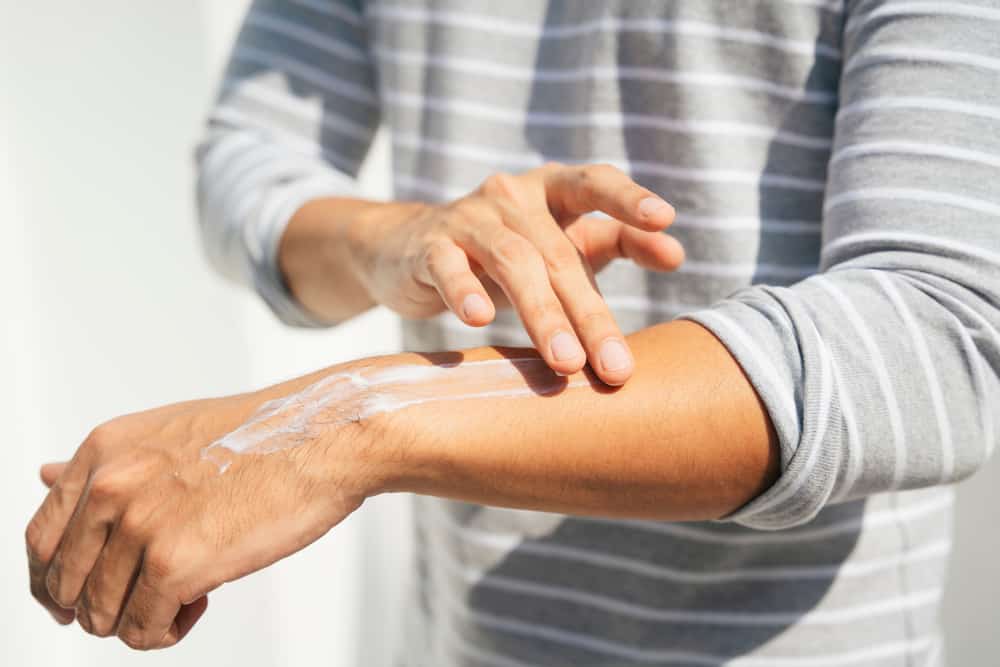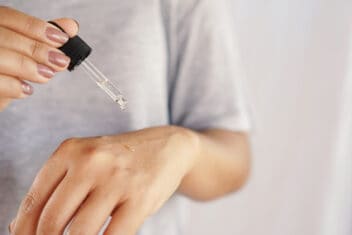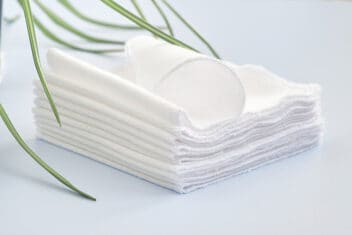Many options for sunscreen are packed full of dangerous chemicals that may help extend the product’s life or increase SPF, but are also linked to cancer, endocrine disruption, infertility, and other health issues. That’s why you should use chemical free sun protection.
Some information suggests that the toxins in sunscreen are harmful to aquatic life as well. The effect of heavy sunscreens on coral reefs is still being analyzed, but it’s likely those summer days swimming in sunscreen have severely impacted our marine life.
There’s no point protecting your skin with something that harms the environment and will wreak havoc on your health. Here are some better options.
Sun Exposure 101

When I was a kid, sun protection was the simplest thing in the world. Mom slathered us with something heavy and greasy feeling from a plastic bottle and we ran wild under the sun.
Later, in an effort to maintain my gothic aesthetic, I found higher SPF sunscreens with more unpronounceable ingredients. Friends warned me that these might not be great for my health, but hey, neither were the clove cigarettes I was smoking.
It all changed when my sunscreen started clogging my pores. I’d liked to say I learned to care about health and wellness for their own sake, but in reality, my journey to chemical-free sun protection started with good, old vanity.
When I did start to care about finding safe, sustainable products after the birth of my first child, I was already well acquainted with natural, chemical-free sun protection.
The way people talk these days, it sounds like the sun has always been our enemy. In reality, consistent, unprotected exposure to the sun is an essential part of a healthy life. The sun is the best source of Vitamin D. Our bodies produce this irreplaceable “vitamin” (it’s really more like a hormone) in response to sunlight on bare skin.
You can also get Vitamin D from plants, to a much lesser degree.
Vitamin D deficiencies can cause everything from insomnia to heart disease. Healthy Vitamin D levels allow our bodies to maintain immune responses, reduce inflammation, and secrete melatonin. A lack of Vitamin D breaks down all of these necessary functions.
The more we deny ourselves unprotected exposure to the sun, the less healthy we become.
But, of course, overexposure to sunlight can cause our skin to burn, and consistent, repeated overexposure to sunlight has its own health risks. Moderation is the key.
When it comes to sunlight, a balanced approach to sun protection allows us to keep our skin safe and maintain healthy vitamin D levels simultaneously.
Avoiding Toxic Chemicals
Mineral-based sunscreens with zinc often provide the best protection with the least amount of risk. But there are a few chemicals that you should be on the lookout for.
Oxybenzone
This used to be a common ingredient in many mainstream sunscreens. But thanks to popular demand, it’s been removed for most of them. Keep a lookout for oxybenzone anytime you’re buying sunscreen, though. It’s a known endocrine disruptor that is also linked to cellular damage.
Homosalate
Unfortunately, homosalate is still commonly found in high amounts in chemical sunscreens. The European Union limits homosalate to no more than 1.4%, but in America, sunscreens can and do have up to 15% homosalate.
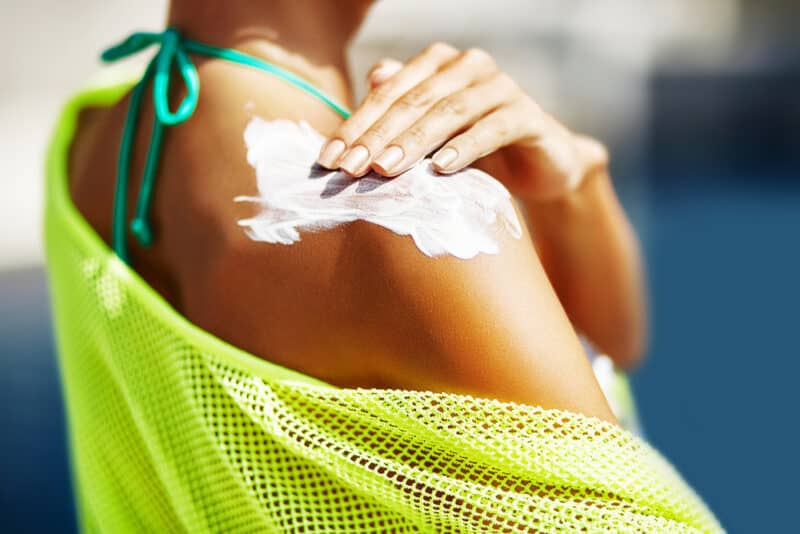
Fortunately, there are plenty of chemical-free options for safer sun protection. Mineral-based sunscreens provide a barrier to UV rays, but other options can be a part of your sun protection habits as well.
1. Natural Sunscreens
Natural, mineral-based sunscreens can do a great job protecting your skin from UV rays without the chemicals in conventional sunscreens.
Watch out for sunscreens that only pretend to be safe, though. Too many chemically-laden sunscreens use clean, green packaging to imply safety.
Safe, natural sunscreens contain non-nano zinc oxide or titanium dioxide. Both of these minerals provide an effective UV barrier. While some natural sunscreens use nano-particles of zinc or titanium there are some legitimate concerns about nano-particles.
Because these particles are so tiny, your skin might be absorbing them. Absorbing zinc nanoparticles is linked to free radicals. Titanium dioxide nanoparticles are linked to DNA changes in the body. We don’t want either of these side effects, of course!
Fortunately, many of the companies that produce mineral sunscreens are determined to stay on top of the research. May of them have moved away from nano-particles. Instead, they use larger (but still tiny) particles of zinc and titanium. That way, the minerals are small enough to work effectively but large enough to avoid absorption.
A Few Good Options
Try All Good natural sunscreen or Badger sunscreen. Both these brands are consistently safe and effective. Neither contains nano-particles, and Badger has some wonderful, natural, insect-repellent sunscreens that are fantastic at blocking UV light and mosquitos.
DIY Sunscreen recipes are also a great option. If you like mixing up your own products, try this medically reviewed option for a simple, safe, homemade sunscreen
2. Protective Clothing

Loose, covering clothes are a fantastic way to protect yourself from the sun. Despite our love of skin baring summer clothes, most people who spend their lives in the sun prefer clothing that covers them. The right clothes can offer excellent UV protection.
Choose darker colors like black, blue, or red, which block more of the sun’s UV rays. Wear long sleeves, long pants or skirts, and light, loose layers.
We tend to assume that it’s always more comfortable to wear as few clothes as possible in hot, sunny weather. In fact, the opposite is true.
Long, loose styles protect your skin from the sun while allowing air flow to cool your skin. Keeping your skin covered in hot weather also helps your body retain moisture – reducing water evaporation.
Some clothing brands are even certified by the Skin Cancer Association as effective for sun protection. Check out Land’s End, Coolibar, and Athleta. While picking out UV-protective clothing, don’t forget to look into sun-safe swimwear. Rashguards, swim shorts, and swim tights can keep your skin safe while you’re at the beach.
3. Hats and Sunglasses
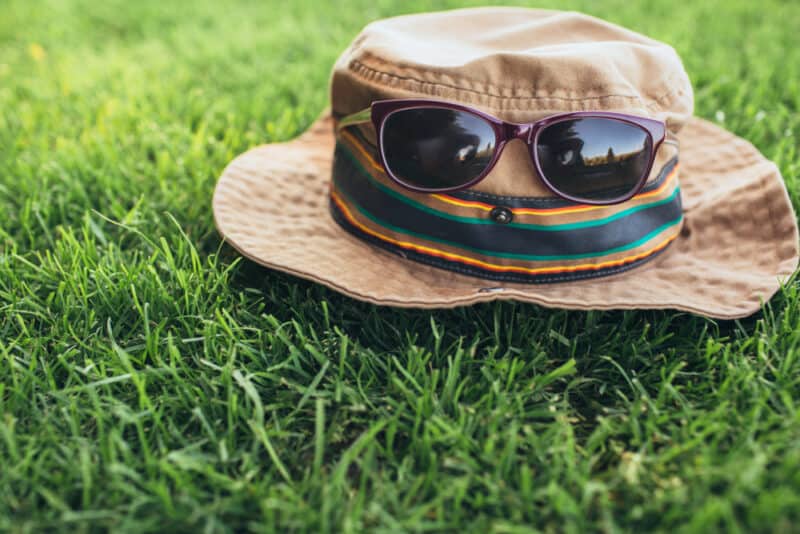
Hats aren’t as popular as they should be in the summer. There are few things more refreshing than a wide-brimmed hat when the sun is high in the sky. Hats and sunglasses are incredibly effective at protecting your sensitive eyes and face from the sun.
The skin on your face and neck is thinner and more prone to sun damage than the skin on your body. Protecting this skin from the sun is essential if you want to reduce signs of aging and protect the health of your eyes. Wide-brimmed sun hats and sunglasses with a high ESPF (eye-sun protection factor).
4. Eat Skin Supporting Foods
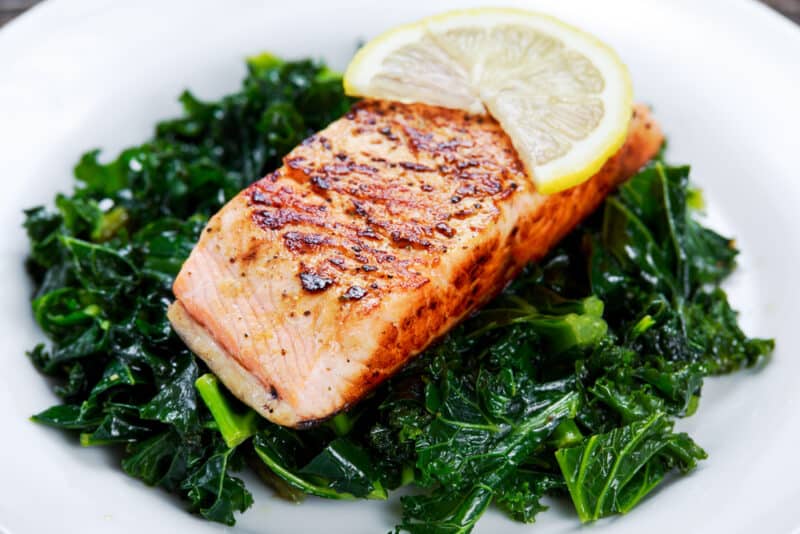
Of course, no food will keep the sun off your skin, but foods high in antioxidants and omega-3s will help your skin deal with the sun in healthier ways.
Antioxidants reduce the cellular damage caused by excessive sun exposure, while omega 3s help to provide sunburn protection by keeping your skin balanced and supple.
Try to include lots of brassicas, oranges, salmon, beef, and spinach in your diet. Avoid heavily processed foods, and try including raw, full-fat dairy options in your diet. Avoid eating large amounts of foods that cause an increase in sun sensitivity.
Foods like dill, lime, parsley, and celery can encourage your body to absorb more UV light. They also make it harder for your body to protect itself from that light. Herbs like St. John’s Wort can also increase your sensitivity to light.
Save these foods for seasons when you won’t spend as much time in the sun.
5. Avoid UV Lights
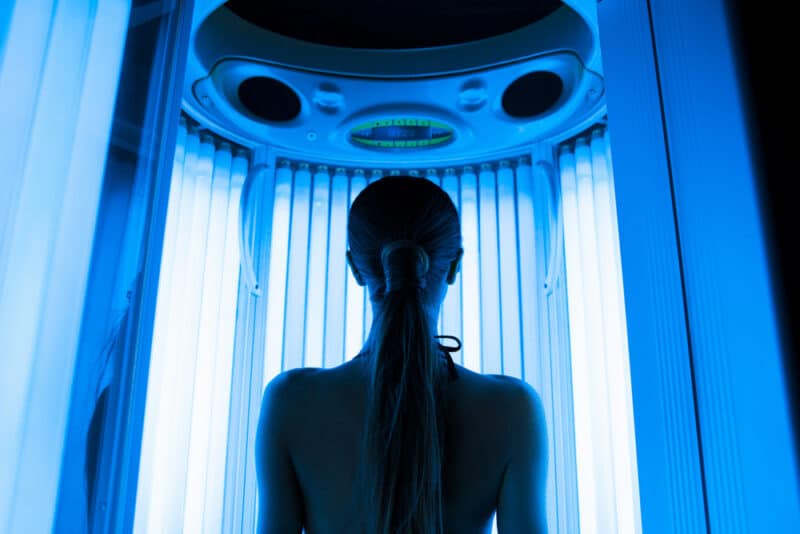
You may not know it, but the sun isn’t the only UV light source in our daily lives. Tanning beds, fluorescent lights, halogen lights, and welding equipment emit UV lights as well. You can’t avoid all sources of non-sunlight UV, but you can work to minimize your exposure to them.
Skip the tanning beds and try to use lampshades and low-UV lights like LED lights at home. LED lights produce very little UV light. “Warm light” compact fluorescent lights also produce lower levels of UV light. They emit higher levels of UV light than fluorescent bulbs, but much lower than conventional fluorescents.
6. Pick the Right Times to Enjoy the Sun

The strength of the sun’s light varies throughout the day and the year. The sun’s rays most damage skin between 10 am and 4 pm. If you’re planning to spend a lot of time in the sun, try choosing late afternoon or early morning times.
Of course, if you’re trying to spend just a little time in the sun, to boost your Vitamin D, go out at noon. The sun’s rays are most intense at noon, meaning you need less time in the sun to produce a healthy amount of Vitamin D.
So if you’re working on a big, outdoor project or heading out on the lake – try getting it done early in the day. But if you spend most of your day inside, take a “sun break” at lunchtime. Sit on a sunny bench and soak up the Vitamin D for about 10-15 minutes.
